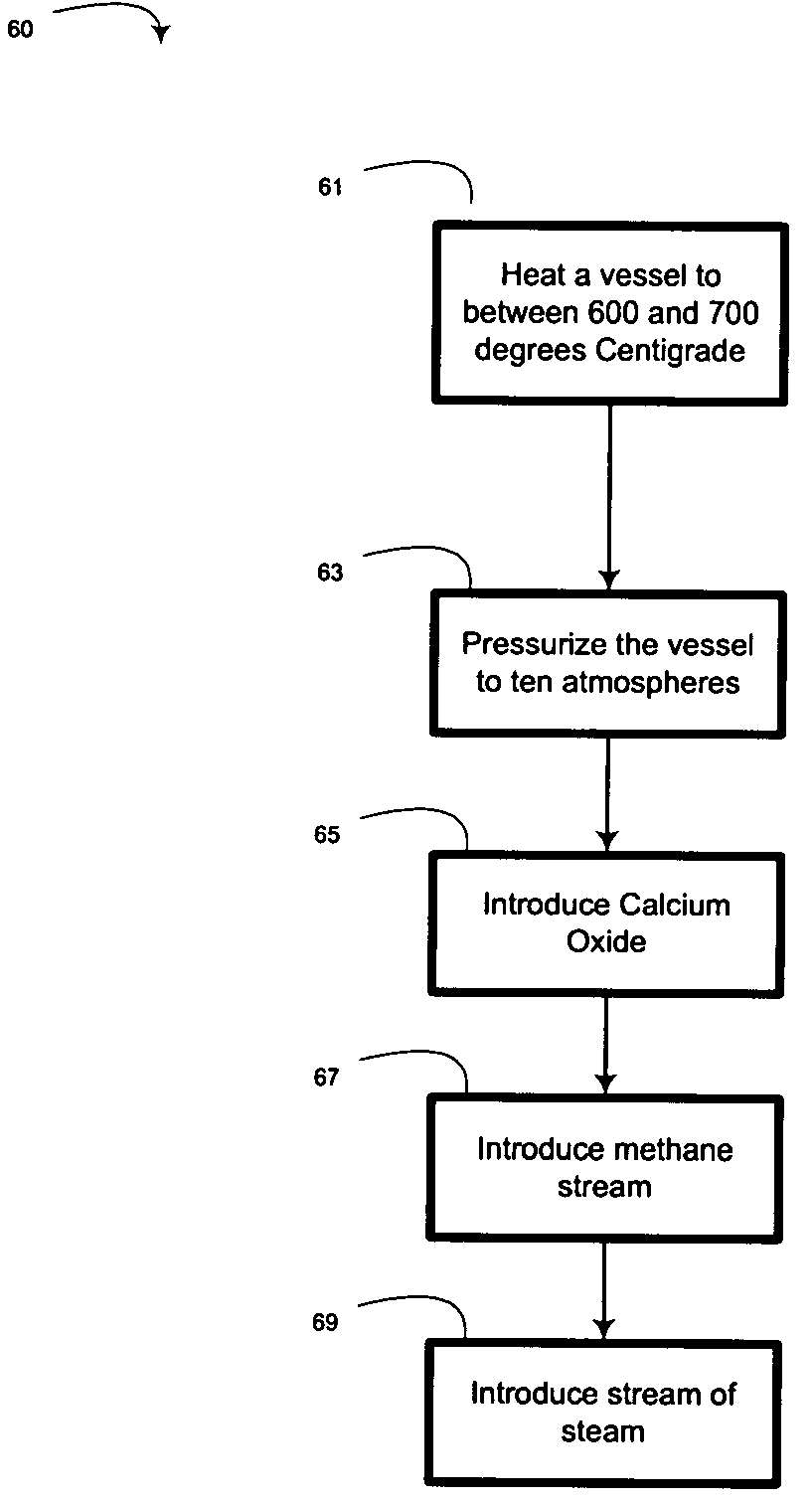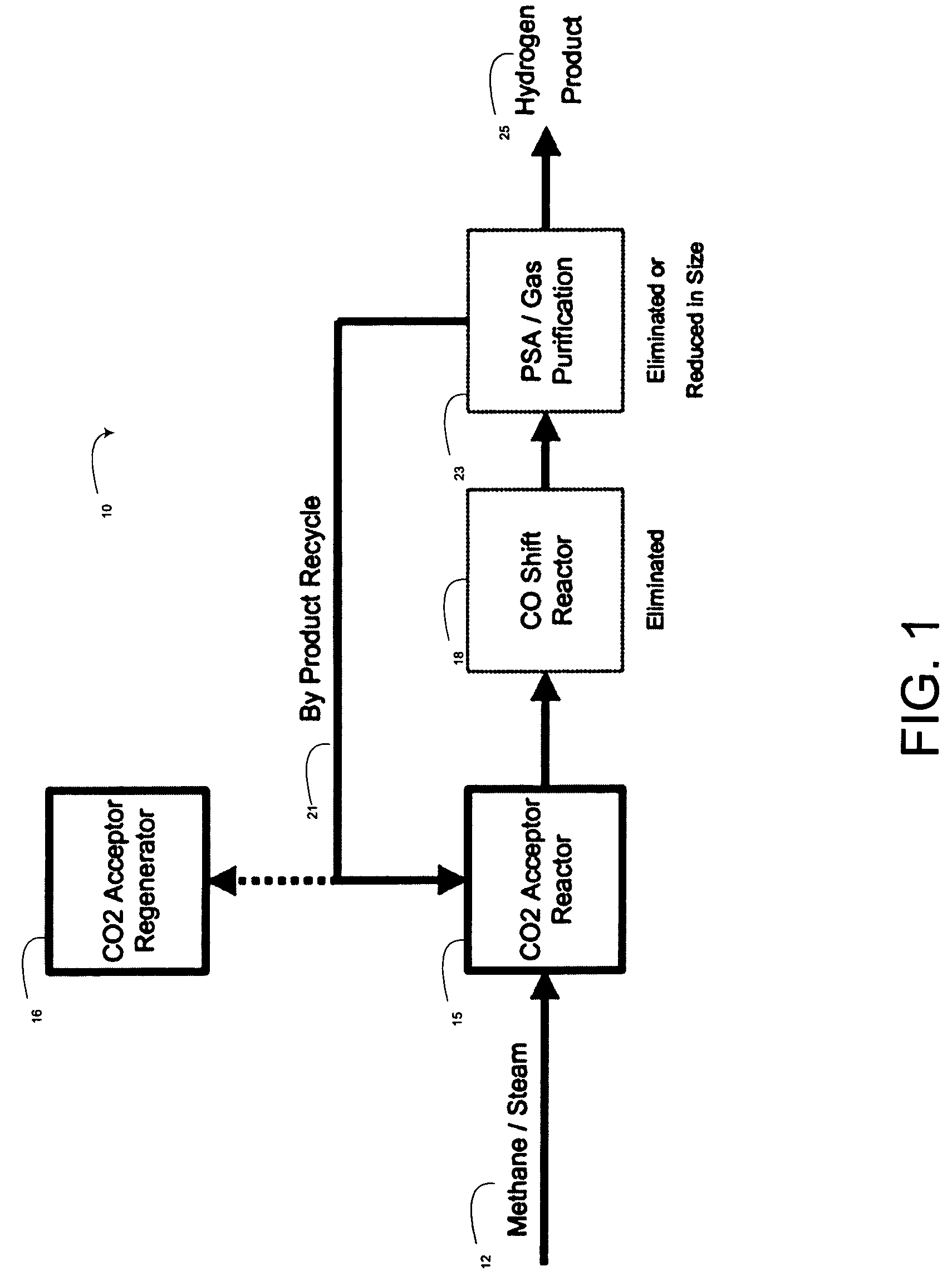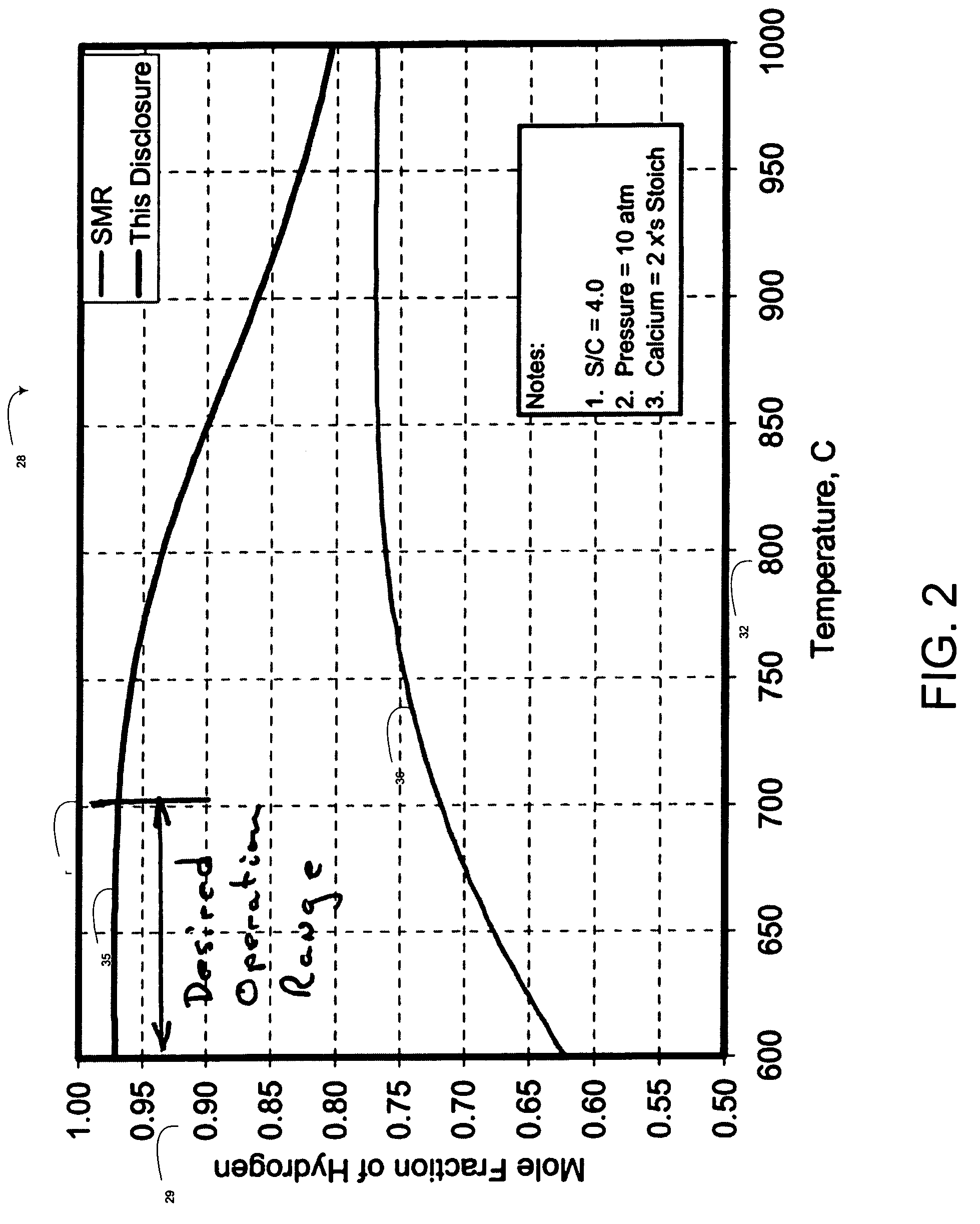Hydrogen generation with efficient byproduct recycle
a byproduct recycling and hydrogen generation technology, applied in the direction of hydrogen separation using solid contact, electrochemical generators, chemistry apparatus and processes, etc., can solve the problems of reduced hydrogen production efficiency, reduced hydrogen utilization rate, and inability to use without further purification, so as to improve or optimize hydrogen, improve or optimize purity
- Summary
- Abstract
- Description
- Claims
- Application Information
AI Technical Summary
Benefits of technology
Problems solved by technology
Method used
Image
Examples
Embodiment Construction
[0025]The present invention relates to methods and systems for generating hydrogen using reforming catalysts together with CO2 gas absorbents. Many specific details of certain embodiments of the invention are set forth in the following description and in FIGS. 1–5 to provide a thorough understanding of such embodiments. One skilled in the art, however, will understand that the present invention may have additional embodiments, or that the present invention may be practiced without several of the details described in the following description.
[0026]By way of overview, methods and systems for generating hydrogen gas from methane are provided. In one embodiment, a method includes heating a vessel containing a catalyst to a temperature of between 600° centigrade to 700° centigrade, and pressurizing the vessel to about ten atmospheres. A pressure swing absorbent (PSA), a methane stream, and a stream of steam are introduced into the vessel. A resulting stream of product hydrogen, and a by...
PUM
| Property | Measurement | Unit |
|---|---|---|
| pressure | aaaaa | aaaaa |
| pressures | aaaaa | aaaaa |
| mole fraction | aaaaa | aaaaa |
Abstract
Description
Claims
Application Information
 Login to View More
Login to View More - R&D
- Intellectual Property
- Life Sciences
- Materials
- Tech Scout
- Unparalleled Data Quality
- Higher Quality Content
- 60% Fewer Hallucinations
Browse by: Latest US Patents, China's latest patents, Technical Efficacy Thesaurus, Application Domain, Technology Topic, Popular Technical Reports.
© 2025 PatSnap. All rights reserved.Legal|Privacy policy|Modern Slavery Act Transparency Statement|Sitemap|About US| Contact US: help@patsnap.com



